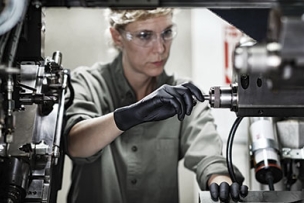MCR Safety has over forty years of experience as a leader in the field of personal protective equipment (PPE). Our assortment of offerings includes gloves, glasses, and garments which are made from the highest quality materials available to ensure maximum safety, comfort, and style.
Work safety vests are a necessary form of protective clothing for workers across numerous industries. This type of safety gear ensures that others nearby can clearly see workers operating in low-light environments by providing visual recognition during both day and night operations.
Hi-vis safety vests are one of the most worn types of personal protective equipment (PPE) and are easily recognizable as crucial safety gear. The demand for high-visibility clothing has been on the rise over the past several years, as more and more companies recognize the needs to keep workers seen across work sites.
So, who sells safety vests? MCR Safety is one of the leading safety brands in America, and they've been selling and supplying safety vests to markets all over the world for decades now. Their products are stocked by some of the leading industrial distributors servicing end-users.
This article will highlight everything a user could want to know about safety vests, from the workers who use them to the standards that ensure they are protected. The opening sections highlight some of the requirements and standards of safety vests. MCR Safety also explores some of the industries that require increased visibility.
OSHA Requirements
Are safety vests required by OSHA? The Occupational Safety Health Administration (OSHA) general-duty clause dictates that PPE must be provided at no expense to workers whenever hazards can't be removed from the worksite. One such hazard is anyone coming into close contact with vehicular traffic and who is at serious risk of not being seen due to poor lighting.








Talk to Us!
Leave a reply
Your email address will not be published. Required fields are marked *